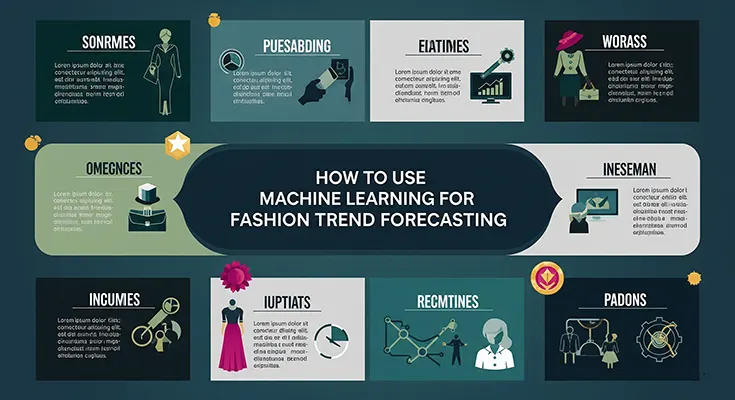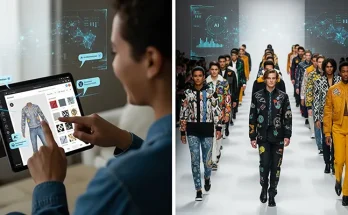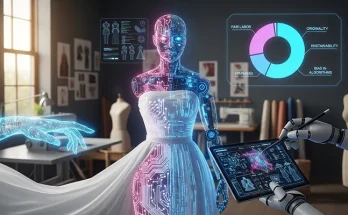The fashion industry operates at a rapid pace, with trends emerging, evolving, and fading in a matter of weeks or months. Predicting these trends accurately is crucial for brands and designers to stay ahead of consumer demands, optimize inventory, and reduce waste. Machine learning (ML), a subset of artificial intelligence (AI), has become a powerful tool in fashion trend forecasting by analyzing vast amounts of data and identifying patterns that human analysts might miss. In this article, we explore how to use machine learning for fashion trend forecasting effectively.
Understanding Fashion Trend Forecasting
Fashion trend forecasting involves predicting upcoming styles, colors, fabrics, and consumer preferences well in advance. Traditional methods rely heavily on expert intuition, historical data, and manual research. While valuable, these approaches are limited by the sheer volume of information and rapidly changing market dynamics. Machine learning enhances forecasting by automating data analysis, improving accuracy, and providing actionable insights in real time.
How Machine Learning Supports Fashion Trend Forecasting
Machine learning algorithms digest diverse datasets from social media, e-commerce platforms, fashion shows, influencer activity, and even weather patterns. By identifying correlations and emerging signals, ML models can predict which trends are gaining momentum.
Steps to Use Machine Learning for Fashion Trend Forecasting
- Data Collection
Gather extensive data relevant to fashion trends. Sources include social media feeds (Instagram, TikTok, Pinterest), online search trends, customer reviews, sales data, runway images, and market reports. - Data Preprocessing
Clean and organize the data to ensure it is structured and free of noise. This includes removing duplicates, handling missing values, and converting unstructured data (like images and text) into machine-readable formats. - Feature Extraction
Identify key features that influence trends, such as color palettes, garment types, fabric textures, hashtags, or user engagement metrics. For textual data, natural language processing (NLP) techniques extract themes and sentiments. - Model Selection and Training
Choose appropriate ML models such as decision trees, support vector machines, neural networks, or deep learning architectures. Train the models on historical trend data to learn the patterns and relationships. - Trend Prediction and Validation
Use the trained model to predict upcoming trends by analyzing new data. Validate predictions against actual trend movements and make adjustments to improve model accuracy. - Integration with Business Processes
Incorporate predictions into design, production, and marketing strategies. This allows brands to create relevant collections, reduce overproduction, and target consumers effectively.
Benefits of Machine Learning in Fashion Trend Forecasting
- Speed and Scalability: ML processes massive and diverse datasets quickly, providing real-time trend insights.
- Pattern Recognition: It detects subtle and complex correlations across data sources beyond human capability.
- Customization: Predicts trends for specific demographics or market segments, enabling targeted marketing.
- Waste Reduction: Helps brands produce only what is predicted to be in demand, supporting sustainability.
Challenges and Considerations
- Data Quality: The accuracy of predictions depends heavily on the quality and representativeness of data.
- Model Complexity: Sophisticated models require expertise to develop and interpret results correctly.
- Trend Volatility: Fashion trends can be influenced by unpredictable cultural or social factors that are difficult to quantify.
Future Outlook
With advancements in AI and machine learning technologies, fashion trend forecasting will become increasingly sophisticated. Integration with augmented reality (AR) and virtual fashion platforms may further refine predictions based on consumer interactions in digital environments. Ultimately, machine learning will empower brands to be more responsive, sustainable, and consumer-focused.
Using machine learning for fashion trend forecasting revolutionizes how brands anticipate and respond to market demands. By leveraging vast data sources and advanced analytical methods, ML enables more accurate, timely, and actionable predictions. Fashion companies adopting these technologies will gain a competitive edge, reduce waste, and better satisfy evolving consumer tastes in an ever-changing industry.





